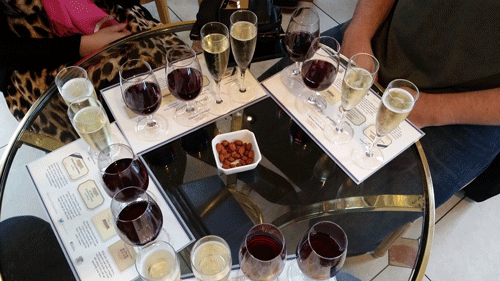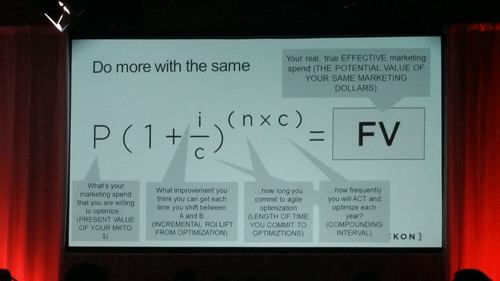MarTech 2016 in Review

Last week, I traveled to San Francisco to experience the Marketing Technology conference, or simply, MarTech, for the first time. Here are a few of my takeaways from the conference as well as some general thoughts on air travel, wine and the city of San Francisco.
New Flights to San Francisco
Virgin America (full disclosure: Location3 has an existing relationship with Virgin America) announced in November 2015 that starting March 15, 2016, the premium service airline would offer flights between Denver, where Location3 calls home, and San Francisco. As a frequent flyer who had never experienced a Virgin America flight, I was excited to see what it was all about. With comfortable seats, quality WiFi and on-demand food, I wasn’t disappointed. The Virgin America flying experience really is different and highly recommended.
A Free Day

Northern California’s wine pedigree is well-documented, so when a free day presents itself, there’s really only one choice: Go straight to the source. I made the short drive to Domaine Carneros, a 138-acre parcel in iconic Napa Valley, where I sampled some of the best sparkling wines in the region. Check it out if you have the chance.
So About MarTech
In its third year, MarTech has gained considerable steam, bringing together “senior-level, hybrid professionals who are both marketing- and tech-savvy.” That momentum is the product of an industry that has seen tremendous growth, from 150 companies in the MarTech space in 2011 to 3,500 in the most recent Marketing Technology Landscape produced by Scott Brinker.
The landscape is adding layers of complexity as it expands and evolves, and the MarTech conference attempts to peel back those layers, classify their components and analyze the implications of an industry where marketing and the technology that serves it are increasingly inseparable.
Natural Laws of Strategy
The first session at MarTech 2016 covered “The Natural Laws of Strategy.” The word “strategy” is often associated with a linear process of well-defined objectives, rigid execution and a binary outcome: failure or success. But this session confirmed what most of us have realized after working for years in a quickly shifting industry: Strategy is far more dynamic than the simple straight line outlined in our official company PowerPoint presentations and buttoned-up executive meetings. Strategy has natural waves; the innovations, setbacks, reevaluations and breakthroughs that lead us from failure to success and back again. The key is to expect and accept those waves and use them to guide your strategy going forward.
Cognitive Marketing
Traditional marketing, the Advertising that the public is familiar with, seeks to attract attention and possibly answer a question. A step forward from traditional marketing is cognitive marketing, the Advertising that professional marketers are using to link a brand experience with the natural processes of the human brain.
More than that, an amazing concept in itself, a goal of cognitive marketing is to use the data, tools, tracking and measurement to deliver an authentic and useful message to a recognized consumer in need. As I’m writing this, I’m listening to a Subaru ad on Pandora. The next step is the ability for marketers to know I’m not in the market for a new car, but I could use some delivery pizza.
This is truly a new game, and you will need the right tools, mindset and people to be a major player.
Agile Marketing

The word of the conference was without a doubt, agile. Agile, agile, agile. But given the value of adapting on the fly, it’s worth repeating again. Agile, agile agile. OK, that’s enough.
Beckon CEO Jennifer Zeszut and Coca-Cola Director of Connection Planning Effectiveness & Productivity Shubu Mitra hammered home the importance of creating a test and learn environment. I loved the comparison of the returns from a test and learn environment to simple and compound interest. As we know, speaking the CFO’s language often pays dividends (get it?).
Agile.
Tech Architecture

As I noted earlier, this emerging technology is becoming more complex by the day. Given the relative youth of MarTech, professionals are still gathering information on just how this new world all fits together. Much like data, we need to gain understanding and familiarity through classification, so that we can identify gaps and use this technology properly.
Final Thoughts
San Francisco is a unique American treasure, and I hope to return soon. Napa is among the most beautiful places I’ve ever visited, and the wine and company at Domaine Carneros was top-notch.
The MarTech conference once again proved why it’s one of the premier events in the marketing world. Its continued focus on simplifying the complex world of MarTech, understanding data, agility of mind and purposeful education perfectly aligns with our own company ethos here at Location3.
Stay In Touch.
Subscribe to our monthly email newsletter.
